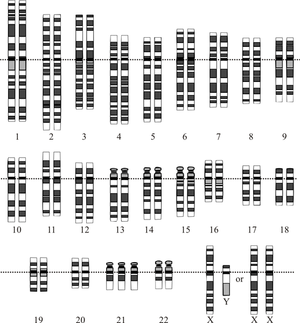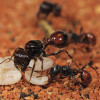Individuals with Down's syndrome have a significantly lower likelihood of developing cancer (with the exception of a form of leukaemia) compared with the general population but no one knew why. Now a study in the journal Nature has revealed the answer.
 Harvard researcher Sandra Ryeom and her colleagues have found that one of the 231 genes on chromosome 21, of which Down's patients carry an extra copy in all of their nucleated cells, controls blood vessel development. This suggested to the team that part of the cancer-preventing effect in Down's might be because cancers find it more difficult to produce new blood vessels to support themselves.
Harvard researcher Sandra Ryeom and her colleagues have found that one of the 231 genes on chromosome 21, of which Down's patients carry an extra copy in all of their nucleated cells, controls blood vessel development. This suggested to the team that part of the cancer-preventing effect in Down's might be because cancers find it more difficult to produce new blood vessels to support themselves.
The clue came from the observation that Down's patients also have lower risks of developing diabetic eye disease, which is caused by the growth of new blood vessels in the retina, and vascular disease in general.
As a result the Harvard team focused on a gene called Dscr1, which encodes a cellular off-switch that suppresses the effects of a blood vessel growth factor gene called VEGF (vascular endothelial growth factor).
The researchers implanted cancer cells into mice genetically engineered to have the rodent equivalent of Down's. Compared with control animals the cancers in these mice grew significantly less well. To prove that Dscr1 was responsible for the effect the team then removed the extra copy of this gene from their Down's mice and repeated the experiment. As expected, the tumour-protective effect had largely disappeared.
However, as the researchers point out, there are 230 other genes on chromosome 21 and one or more of these may also be contributing to this effect. But regardless of this, the present results confirm that Dscr1 has a powerful anti-cancer action achieved through suppressing the growth of new blood vessels that are needed to sustain solid tumours.
According to the researchers "it is, perhaps, inspiring that the Down's syndrome population provides us with new insights into mechanisms that regulate cancer growth and, by so doing, identifies potential targets for tumour prevention and therapy."
- Previous Dragons with toxic bite
- Next Virus to blame for blood pressure










Comments
Add a comment